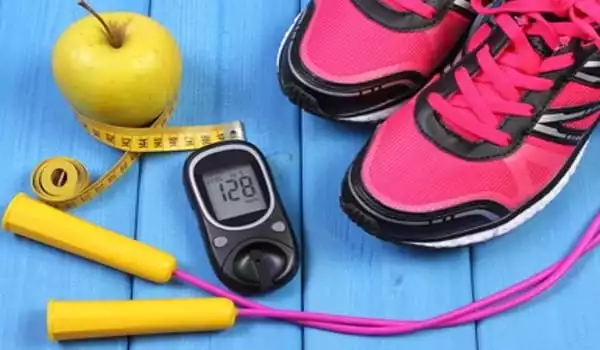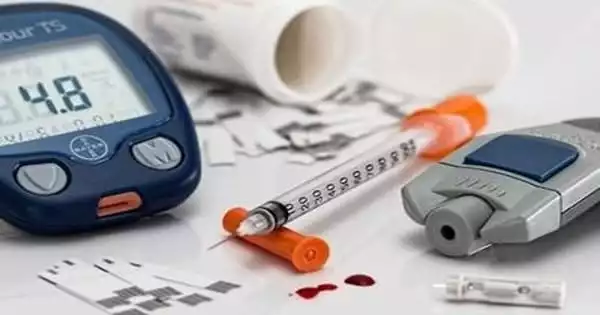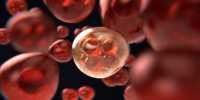According to scientists, one method exercise can mitigate the effects of diabetes is by activating a natural system that allows us to build new blood vessels when old ones are destroyed by the disease.
Angiogenesis is the ability to generate new blood vessels, and diabetes not only damages existing blood vessels but also inhibits this intrinsic potential to grow new ones in the face of sickness and injury, according to experts from the Medical College of Georgia’s Vascular Biology Center. Endothelial cells line our blood vessels and are critical to the formation of new blood vessels.
The MCG researchers now have the first evidence that, in the face of diabetes, even one 45-minute session of moderate intensity exercise allows more exosomes, submicroscopic packages filled with biologically active cargo, to deliver directly to those cells more of the protein, ATP7A, which can set angiogenesis in motion, they report in The FASEB Journal.
Exosomes, like the most sophisticated and efficient delivery systems we’ve all come to rely on, carry different messages depending on where they came from and where they’re going, says Dr. Tohru Fukai, MCG vascular biologist and cardiologist.
While he and co-corresponding author MCG vascular scientist Dr. Masuko Ushio-Fukai aren’t sure where these beneficial exosomes come from, Fukai says one location they go is to endothelial cells.
SOD3 is naturally muted in endothelial cells, therefore they must obtain it from other cells, according to Ushio-Fukai, emphasizing the need of exosome delivery. SOD3 must then bind to endothelial cells at its native site, known as the heparin-binding domain, and the copper transporter ATP7A must be present for SOD3 to be active there.
Dr. Masuko Ushio-Fukai
Two weeks of volunteer jogging on a wheel for mice and one cardio session for people boosted levels of ATP7A in exosomes that adhered to endothelial cells in both animal models of type 2 diabetes and a handful of healthy 50-somethings.
The activity did not significantly affect the weight of the mice at that point, but it did improve a marker of endothelial function and substances like vascular endothelial growth factor, which are required for angiogenesis, according to the researchers. Exercise also raised the amount of the potent, natural antioxidant extracellular superoxide dismutase, or SOD3, but Ushio-Fukai believes that the greater payload of ATP7A, which is also known to transfer the vital mineral copper to cells, is critical to make full use of the SOD3 present.
SOD3, a natural antioxidant produced by vascular smooth muscle cells in blood artery walls as well as skeletal muscle cells, aids in the maintenance of healthy levels of reactive oxygen species, or ROS. ROS is a natural consequence of oxygen usage that serves as a key cell signal, allowing for a range of tasks. However, with diabetes, high blood sugar levels result in elevated ROS levels, which impede critical physiological functioning.
The Fukais discovered that diabetes lowers ATP7A levels. They also have some of the first evidence that exosomes circulating in the plasma of sedentary animal models of type 2 diabetes actually hinder angiogenesis when placed in a dish with human endothelial cells, as well as in an animal model of wound healing.

The researchers believe that synthetic exosomes, which are already being studied as medication delivery systems, could one day be used as a “exercise mimetic” to restore patients’ ability to create new blood vessels after diabetes has destroyed their intrinsic ability. In fact, they have already created exosomes with SOD3 overexpression and discovered enhanced angiogenesis and healing in a mouse model of diabetes.
SOD3 is naturally muted in endothelial cells, therefore they must obtain it from other cells, according to Ushio-Fukai, emphasizing the need of exosome delivery. SOD3 must then bind to endothelial cells at its native site, known as the heparin-binding domain, and the copper transporter ATP7A must be present for SOD3 to be active there, according to Fukai. Fukai emphasizes the importance of ATP7A and the binding location. The benefits were lost, for example, when scientists eliminated the binding site from the endothelial cells, as can happen in nature.
When SOD3 enters the scene and becomes active, it transforms the ROS superoxide into hydrogen peroxide, or H2O2, another signaling ROS that aids in regular endothelial cell function. The Fukais have reported that in human endothelial cells, overexpressing SOD3 promotes angiogenesis by increasing H2O2.
A copper connection also runs throughout this process as endothelial cells regularly use a lot of copper, and ATP7A, known to transport the essential mineral that we consume in foods like nuts and whole grains, is dependent on copper itself. Physical exercise, like running or walking on treadmill, prompts muscles to contract which in turn prompts release of exosomes into the blood.
Fukai was a postdoctoral fellow in the Emory University Section of Cardiology and was part of the research team that discovered that exercise boosts SOD3 activity. SOD3 levels decline with age and in some diseases such as diabetes and hypertension.
Exosomes are being researched as biomarkers for diseases like as cancer and diabetes, as well as precise treatment delivery systems. Exosomes produced by a cancer cell, for example, will zero in on a cancer cell. According to the Centers for Disease Control and Prevention, one out of every ten Americans has diabetes.














